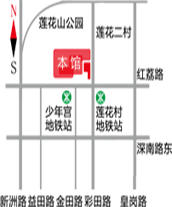
- Literary Interest - Sino Korean Ink Painting Art Exchange Exhibition
-

Click to view Exhibition period: November 19, 2010- December 5, 2010
Exhibition location: Halls E and D, 3rd floor, Guanshan Yue Art Museum
Organizers: Shenzhen Guanshan Yue Art Museum and Korea Yizhai Art Museum
The cultural origins of China and South Korea have been long-standing since ancient times, and the tradition of literati painting is a precious tradition shared by the people of both countries. For example, Mr. Yizhai Xu Bailian inherited the Nanzong painting, which has the tradition of Korean literati painting. Therefore, this exhibition focuses on the theme of "literati interest". We believe that this theme will better evoke the common recognition of cultural values by artists from both regions, in order to achieve deeper exchanges.
From the Tang Dynasty in the 7th century until today, although the development of ink painting art in the East has shown a diversified trend, as the mainstream tradition of literati painting, it has formed the core of ancient art tradition and played an important role in connecting the past and the future. Traditional literati painting, with its unique creative ideas, methods, style characteristics, etc., freely expresses the rich and broad spiritual world of artists, which can be said to be full of deep connotations of Asian national emotions and wisdom, reflecting the spiritual realm of humanistic art, and becoming a model of Eastern painting.
Today, it has become a consensus to pay attention to traditional painting studies, especially since the 1980s. Promoting its historical, humanistic, and artistic value has been a thriving topic in the art world. Therefore, in this year's "China Korea Ink Painting Art Exchange Exhibition", we focus on "literati interest" and emphasize the aesthetic taste of combining "poetry, calligraphy, and painting" in literati painting in the form of expression, aiming to re understand the spirit of traditional art and emphasize the "humanistic" background of ink painting art. This is also the conscious historical consciousness in the development of contemporary ink painting art. Although China and South Korea share common cultural origins, the artists in the two countries are in different social and cultural contexts, and have different perspectives on the modern interpretation of literati painting. This will make our communication and thinking more fresh and vivid, not only adding academic interest and expanding academic perspectives, but also guiding the exchange of ideas between the two sides to a broader field. This is one of the exchange purposes that our two museums and regions hope for.
-
2010-11-16



